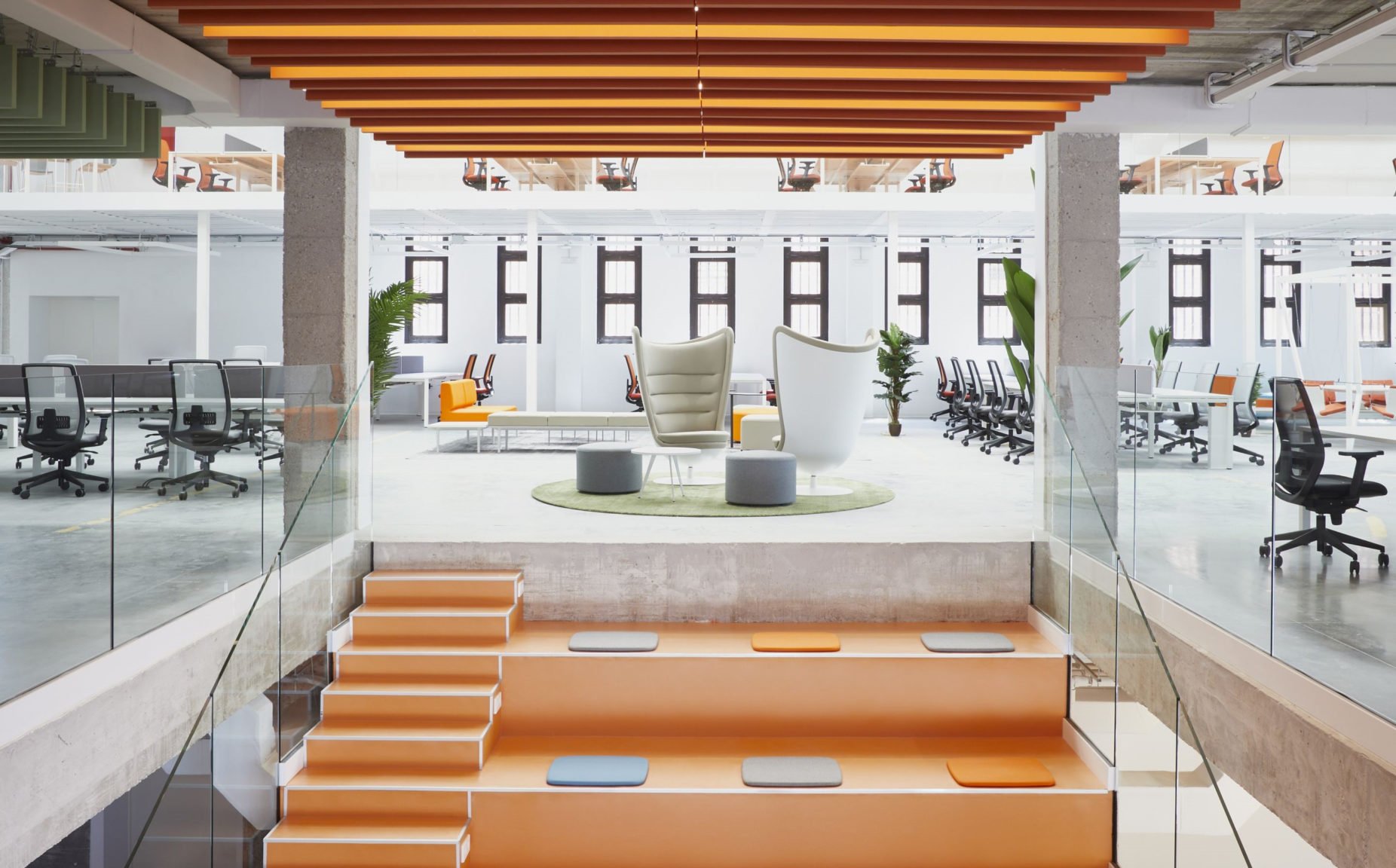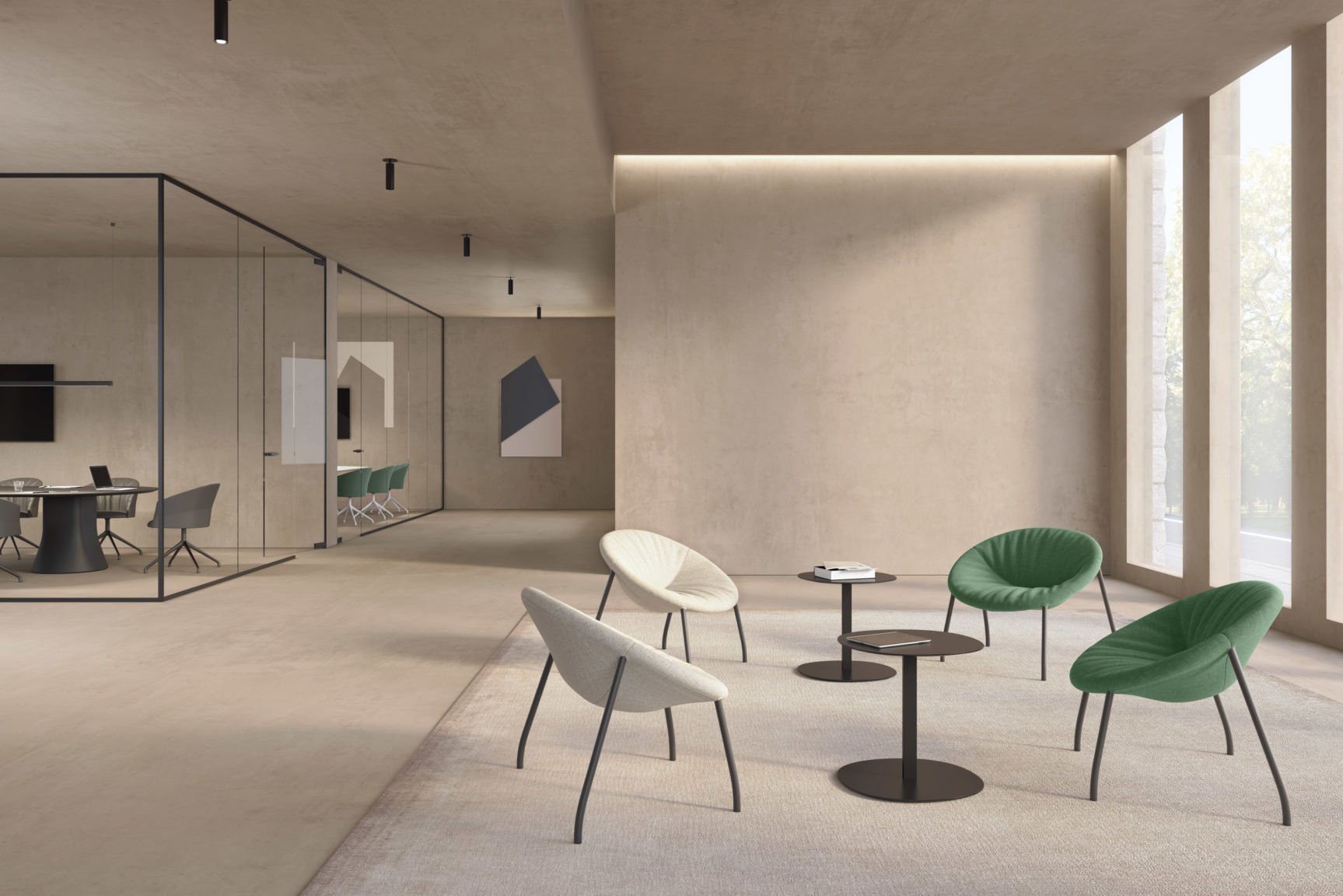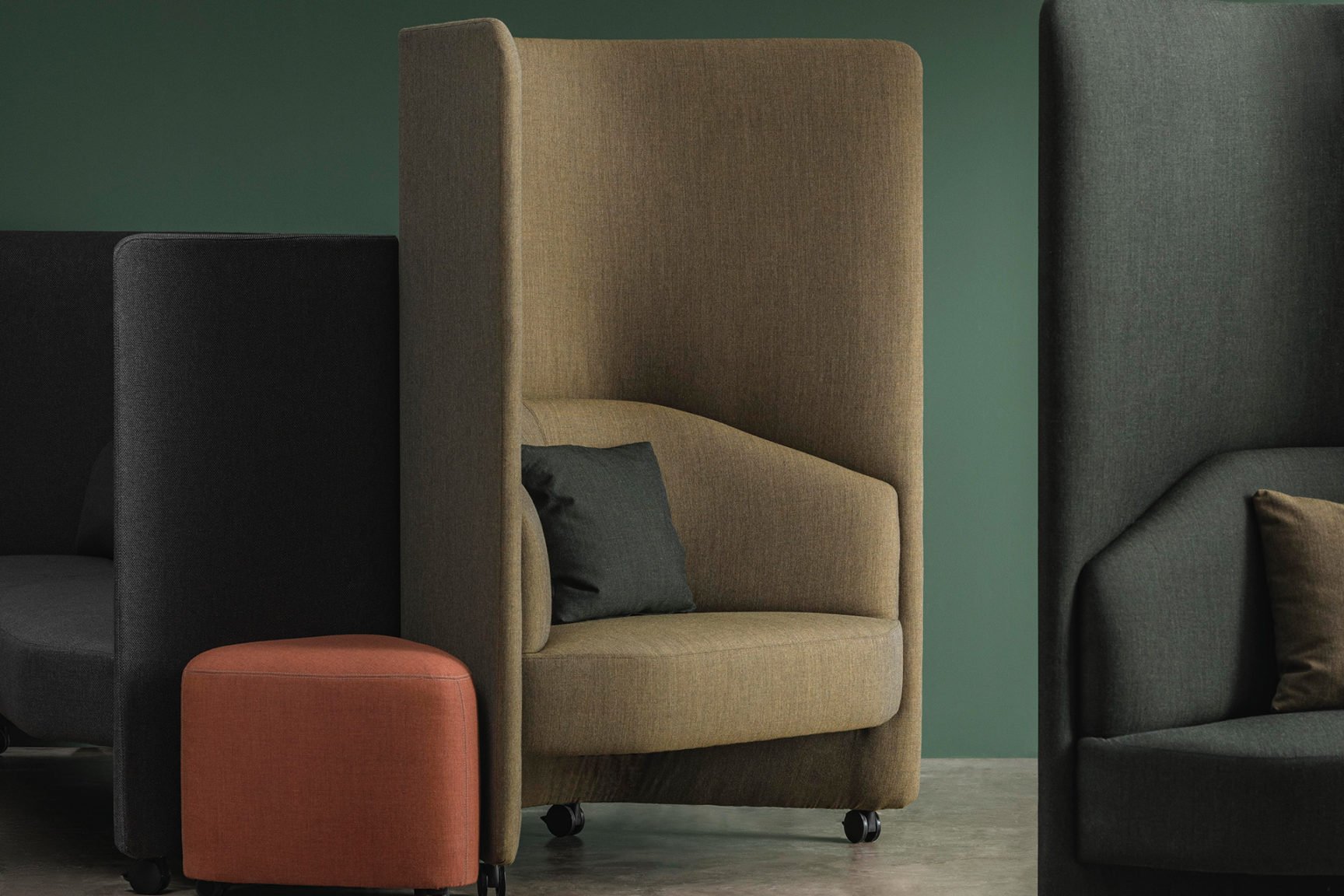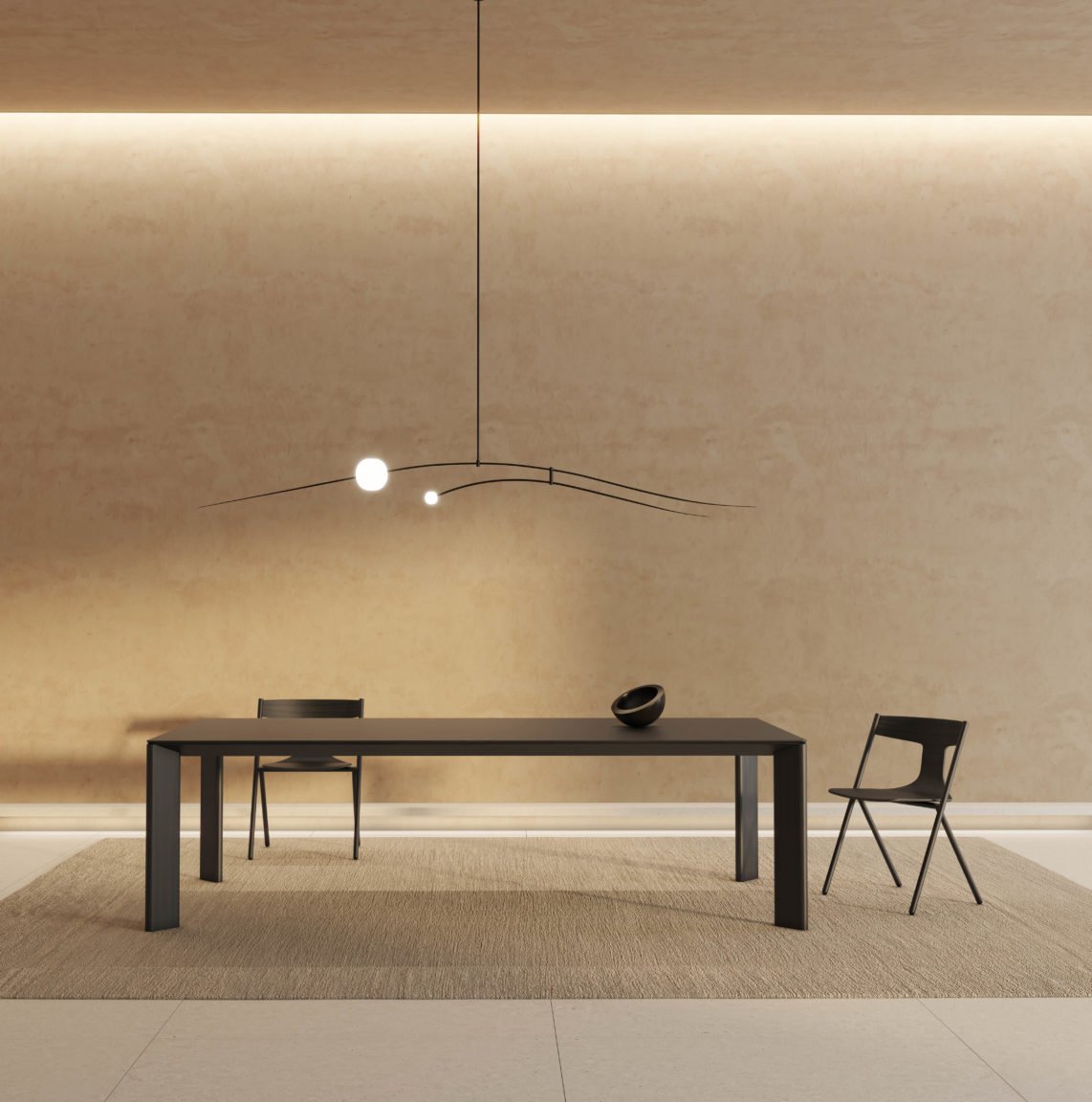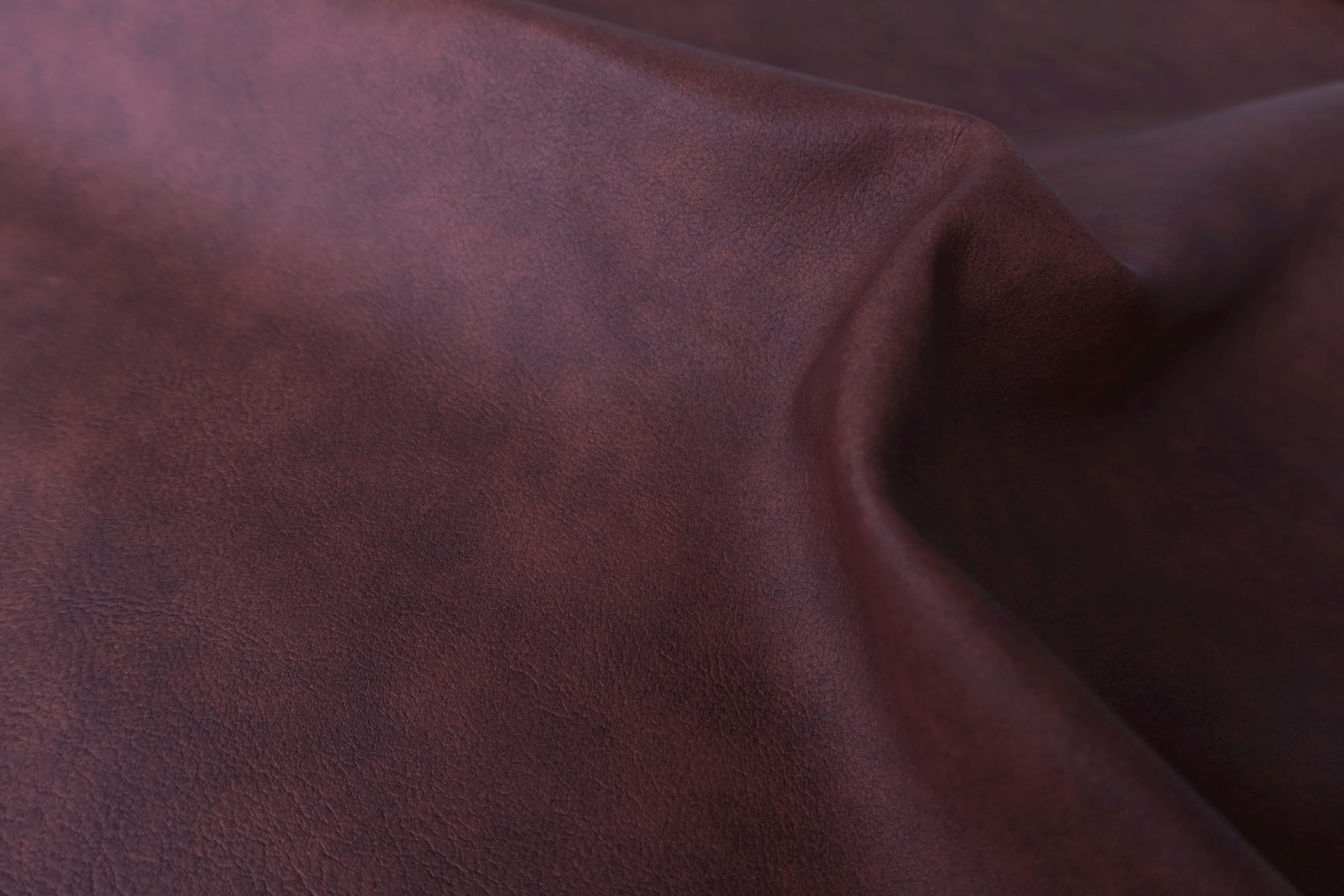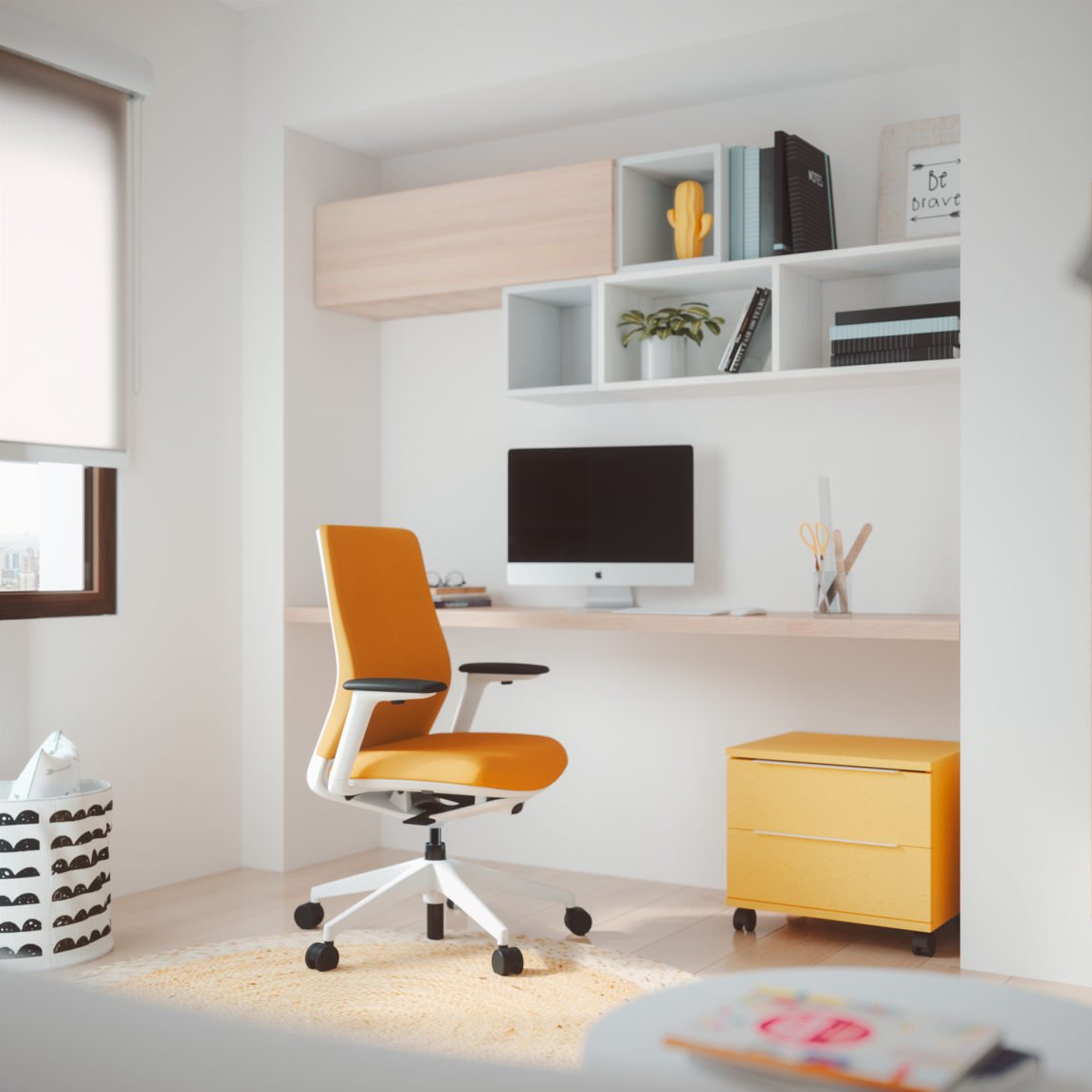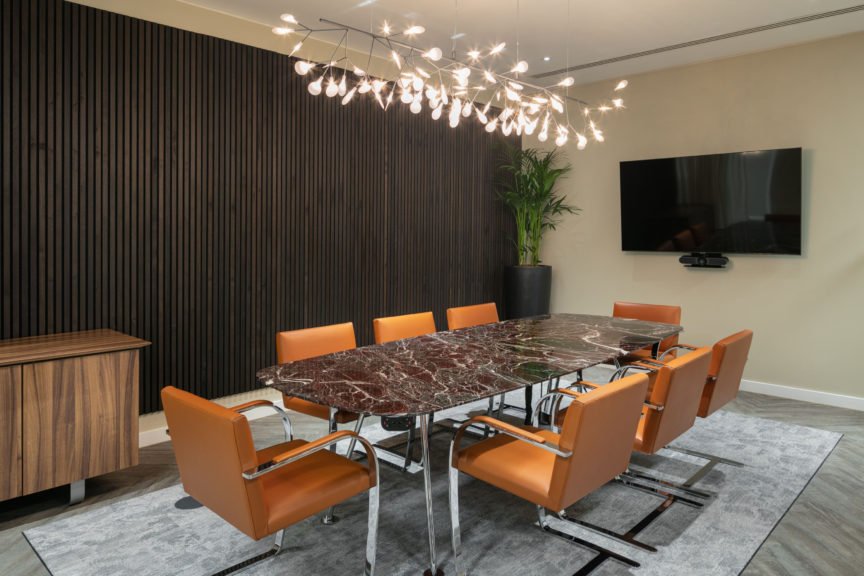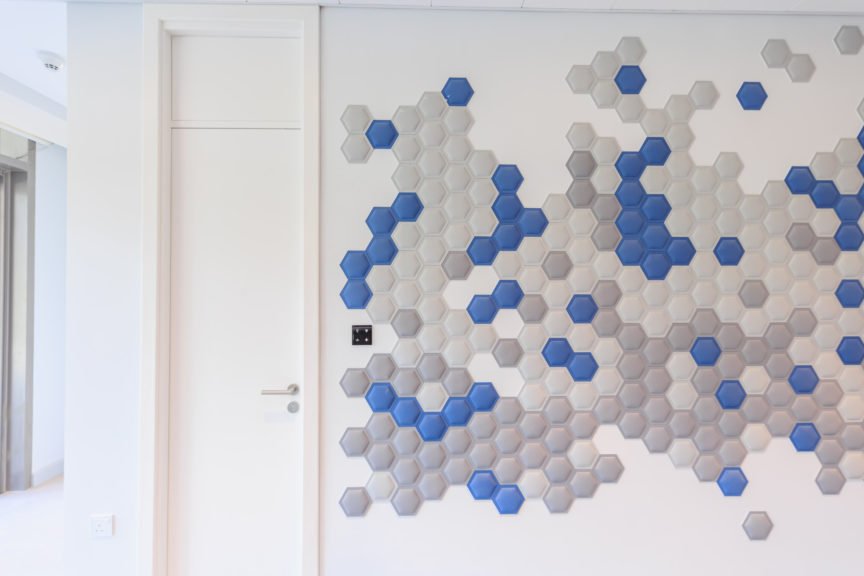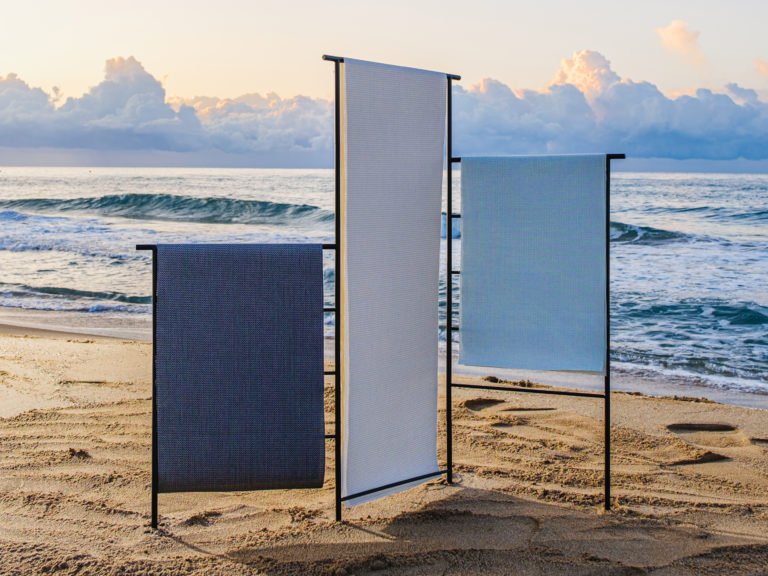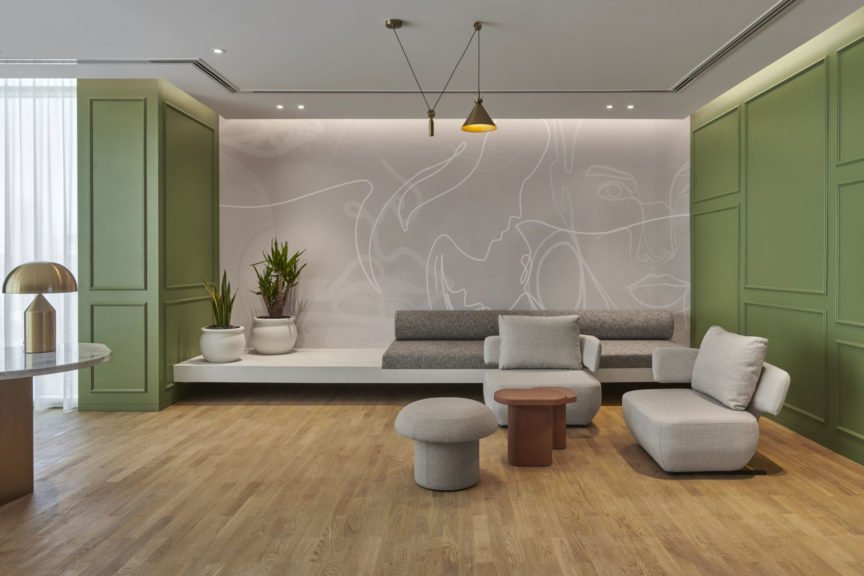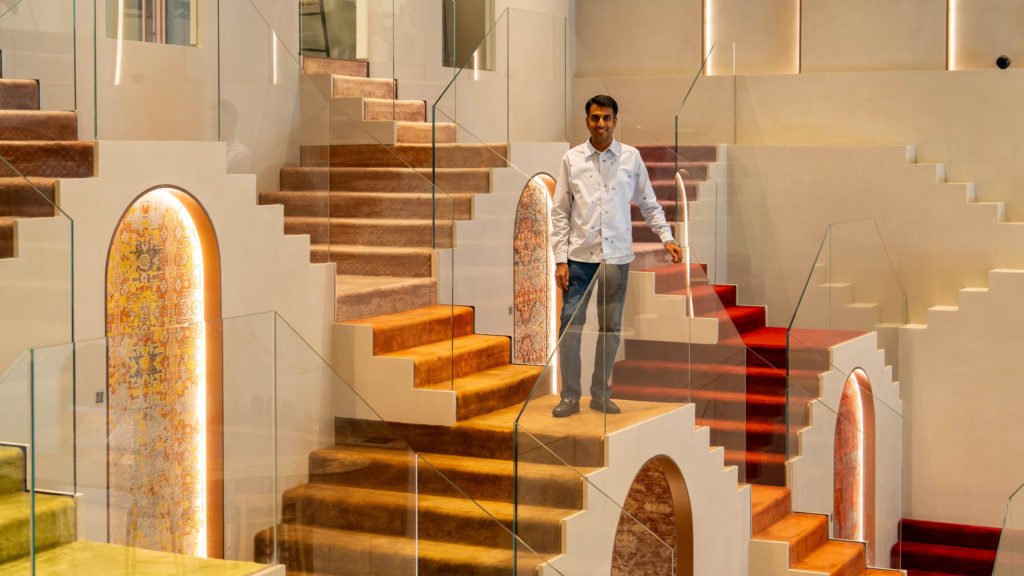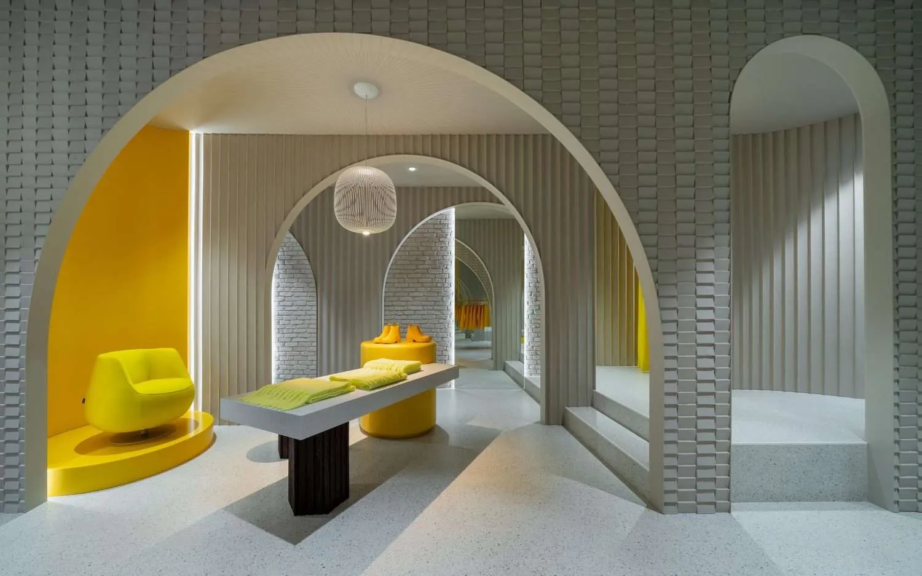The office offers unparalleled perks of socialising, quick collaboration opportunities, boosted productivity, and dedicated time intervals of work. Yet, the comfort and convenience of working from home is too enticing to leave behind. Needless to say, when work called, most were all hesitant to be confined to a cubicle again.
Truth be told, the charms of a contemporary open floor office with a gazillion amenities are luring, but the ‘freedom’ and personalisation of home office is a tough competitor. Employees can reel in the pleasures of flexible working hours, personalised lighting, temperature and acoustic conditions and also that extra cushioned seating.
Employers, product and interior designers have been looking for a crux to make the daily commute to offices worth the hassle. Will the commercial landscape of an office finally reboot itself to residential comfort or is the hybrid model here to stay? Either way there’s an office revolution brewing.
From left to right: Pernod Ricard Office by Say Studio |Photo credits: Nikola Stokanovic and Chris Goldstraw Photography; Work.Life Old Street Office by Two Ltd | Photo Credits: Tom Fallon Photography
Employee Well-being through Recovery-oriented Design
Workplaces are inevitably high-stress environments that require intense focus and problem-solving skills that often take a toll on employees’ mental and emotional health. Just as intensive physical exercise requires recovery periods to allow the body to cool down and regain strength, mental and emotional stress in the workplace also requires recovery spaces with versatile seating that allows one to stretch and relax.
Weighing in on this, Jesús Llinares, CEO of Andreu World, a world leader in seating and table furniture, adds, “We wanted to create a small place of rest, a desk, or an armchair, that can be put away when work is done and becomes invisible. Our In-Out Office furniture system allows this productive and dynamic work environment. It comprises tables with different panel heights and modules with many other elements. The collection incorporates acoustic reduction solutions to provide privacy and soundproofing to promote concentration, and when used together for collaborative work. Additionally, versatility is ensured thanks to its wheels that can be added to the modules.”
Human Connection – Ergonomics and Employee Retention
Offices encompass more than mere physical components, such as walls, desks, chairs, and computers. A truly exceptional work environment seamlessly integrates both comfort and utility, instilling a sense of inspiration while effectively catering to the diverse needs of its employees. Therefore, it is paramount to incorporate ergonomic principles when crafting such a workspace to further foster an individual’s overall well-being, motivation, and ultimately, dedication to their work.
Soledat Berbegal Roque, Counselor and Brand Reputation Director at ACTIU, agrees, “To make organisations more dynamic, agile and creative, we need capable and motivated talent. And to attract and retain this talent, we need to reimagine offices as dynamic environments that foster creativity, contemplation, and most importantly, prioritise the needs of individuals.”
The global furniture brand known for its specialised products that are technology-integrated and enhance wellbeing in work spaces, guides through example. “Our latest product, the A+S Work, is a refined chair that is lightweight, intuitive, sustainable, and, above all, highly comfortable. Developed in collaboration with Alegre Design, A+S Work is crafted entirely out of thermoplastic material and boasts an innovative technological platform. With particular attention given to ergonomics, the chair caters to people of different weights and heights,” Soledat adds.
Sustainability and High-Performance Furnishings
With biophilic design being hailed as a key element in corporate interiors, green spaces and the concept of rejuvenating breaks is once again gaining traction. This time around though, the design approach is not so artificial with the mere addition of plants but instead seeks to introduce spaces and materials that reduce stress levels while contributing to better air quality.
Spradling – a globally recognized company for its Coated Fabric solutions and zest for improving air quality – has a sustainable approach at its forefront and foresees long-lasting fabric solutions in the near future.
“The challenge for the textile industry will be to offer truly durable solutions containing recycled or biodegradable components, and we are already working on this. Our coated fabrics are constantly innovated with advanced technologies that guarantee high performance, protection against germs, bacteria, and stains, and easy maintenance. Additionally, our products offer an incredibly soft hand quality, ensuring the highest level of comfort for employees. For instance, our Tannery collection is a perfect mix between softness and resistance, and practically indistinguishable from real leather. Capable of withstanding extreme weather conditions and resisting UV radiation and water, this collection is perfect to upholster high-traffic areas,” reveals Natalia Cortés, Europe Marketing Director.
Adaptable work environments through Flexible Furniture
The quality of furniture and materials utilised plays a noteworthy role in well-being. The chosen furniture scape must be manufactured with thoughtful consideration of colours, lighting, heat, and temperature – all of which aid in elevating productivity and performance – to offer the utmost comfort for extensive working hours.
Marta Cerezo, Communications Manager for Viccarbe advocates, “Flexible furniture that transforms and connects spaces and users, while fighting against the well-known sedentary work environment is the future.”
The Valencia-based, Mediterranean furniture brand is well-known for its environmentally sustainable approach and unique designs. Elaborating on their adaptable furniture collection, Marta adds, “Offices need to become open and versatile collaborative spaces and in this sense, our modular furniture becomes the ultimate ally. An example of this is Zoco, a versatile lounge chair with optional casters by Victor Carrasco. This lounge chair fosters inclusive behaviours as it can be moved around easily to solve any requirement, adding comfort and extra seating wherever needed. Similarly, our latest product, Foro is a wooden table designed by John Pawson. The table is crafted from solid oak wood to add dimension, texture and warmth to make working environments feel more inviting and appealing.”
Future Forecast
Well-being in design stands out as a common denominator. The correlation between workplace motivation and a nourishing work environment is easy to chart out. To achieve this, offices are pivoting towards biophilic design, ergonomic furniture, soft furnishings and increased acoustics and air quality and inclusion of rejuvenating and collaborative spaces.
Analysing the current situation, it seems the focus of a forward-thinking work environment is slowly shifting from meeting the basic needs of employees to prioritising their comfort and convenience. As observed, comfortable seating and ergonomic workstation solutions are reducing physical strain and discomfort, while added acoustics and temperature control systems create a calming and distraction-free atmosphere.
To summarise, the way ahead manifests a work environment where employees feel heard and valued. When employees feel that their opinions and contributions are acknowledged they feel invested in the success of the company and are ultimately more likely to get on that daily commute.
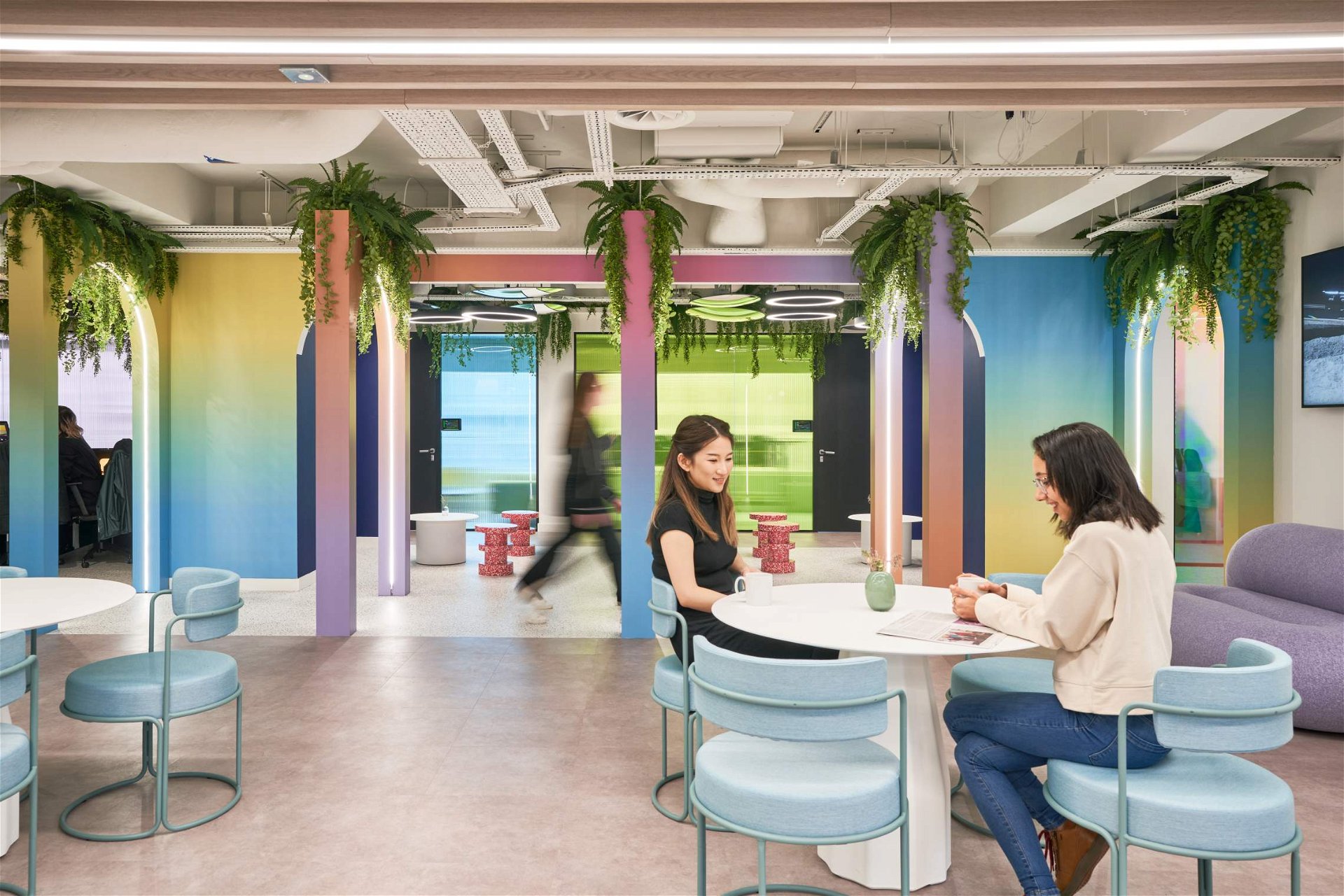
Huckletree Oxford Office, London by Modus Workspace | Photo credits: Tom Fallon Photography
Article info
Article:
Date added:
23 May, 2023

